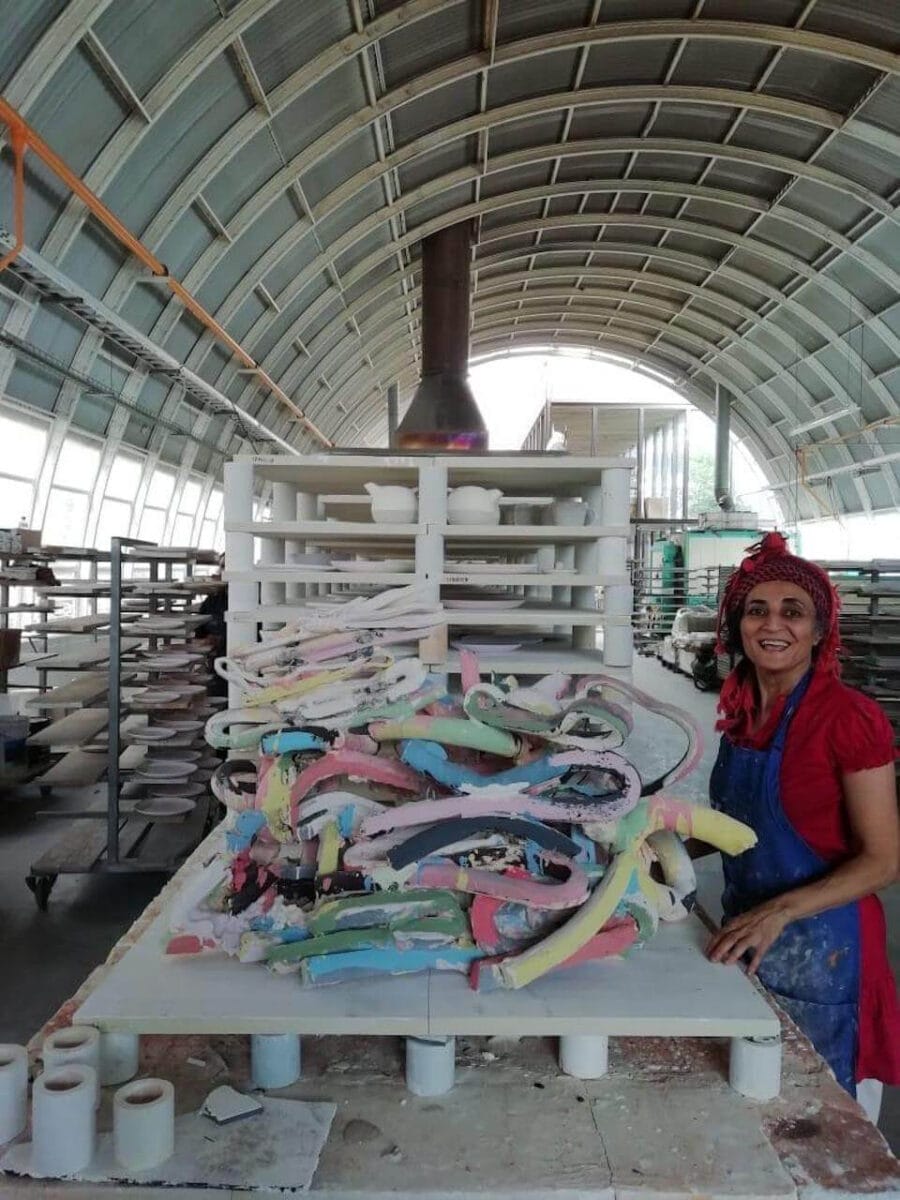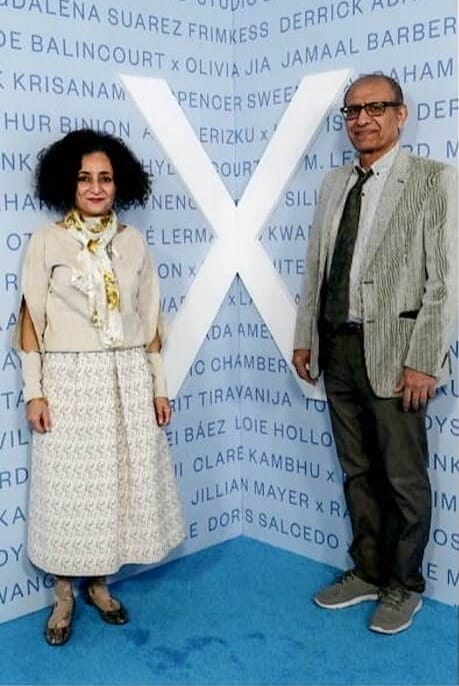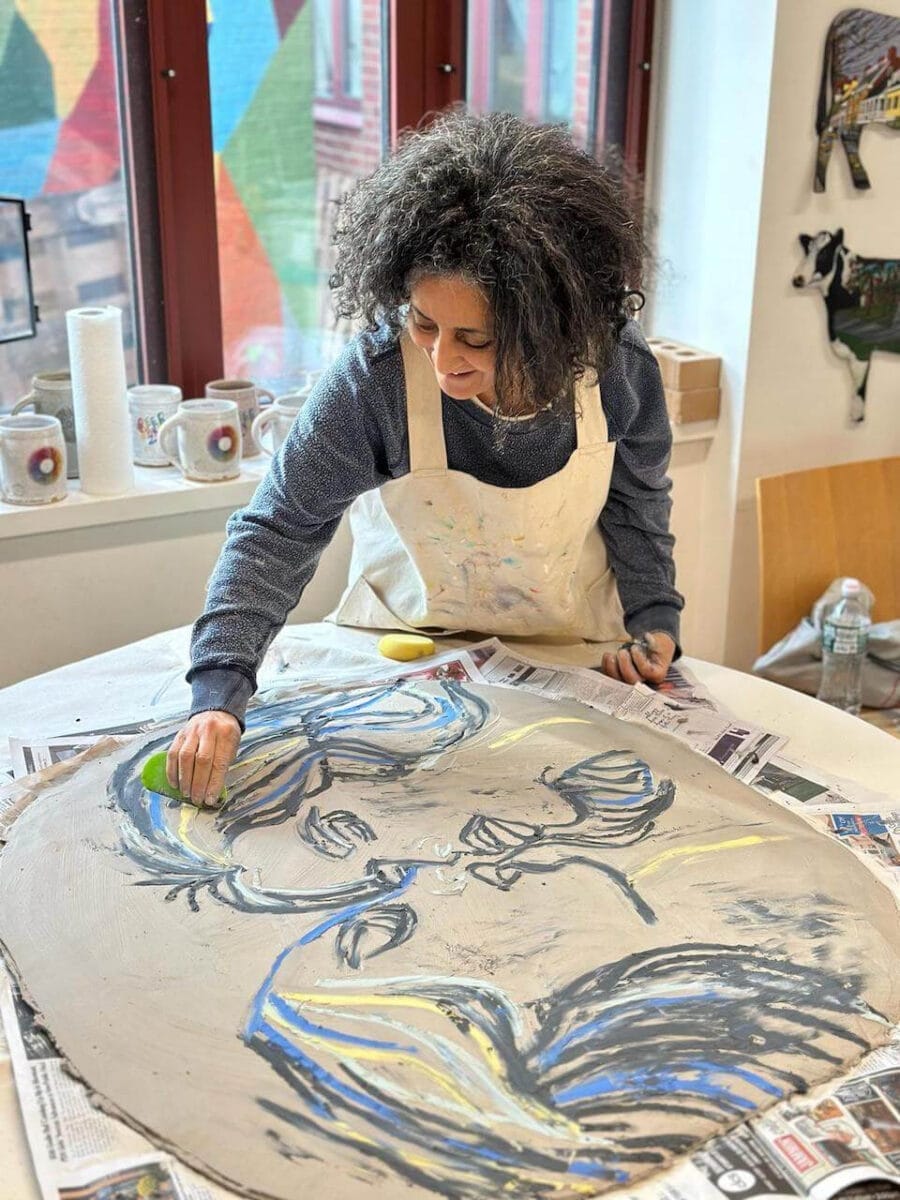The original installation of Ghada Amer’s Women’s Qualities gardens took shape in Pusan, South Korea, in 2000. At the Metropolitan Museum of Pusan, Ghada Amer asked Korean museum staff members and visiting artists what traits they would commonly attribute to women. She then planted the answers – virtuous, chaste, submissive, fair skin, large breasts, rich, diligent, sensual– in block letters by using a local flower whose deep green plant blooms into deeper red flowers once a year for two months.
Though the gardens were created at the start of the twenty-first century, the qualities in Amer’s work echo, build upon, and contrast with women’s traits communicated by gardens and flora in early sixteenth-century European tapestries. As pointed out in my previous blog post Modern Millefleurs- Part I, the decorative flowers and gardens in Renaissance tapestries play an important symbolic role in communicating meaning and visually representing women’s qualities.
One such tapestry is The Unicorn Surrenders to a Maiden, part of the Unicorn Tapestries series that one can view at the Metropolitan Museum of Art in New York. In this hanging, the unicorn has been subdued by a maiden, who, barely visible today in the fragmented tapestry (only her hand, grasping the unicorn’s mane, and her sleeve, under his beard, remain) is depicted in an enclosed garden (hortus conclusus), a space often used as a metaphor to represent the purity of a maiden (1). Although the maiden who tames the unicorn is key to the story in the tapestry, the disappearance of most of her figure from the canvas (the result of damage to the tapestries after their looting in 1793) erase the qualities she is meant to communicate from the image (3). Though Amer does not destroy or erase the qualities she planted, in choosing flowers that bloom only once a year, the intensity of the display is subject to change. Nonetheless, though the words are less attention-grabbing when the plants are green, the qualities in the Pusan Garden– like all women’s qualities—have literally taken root in Amer’s garden and are visible all year long.
A second, more complete female figure, figures more prominently in the tapestry. Clothed in red, she looks over her shoulder at the hunter and hounds who arrive at the scene. The red at the center of both works – the standing figure’s gown and Amer’s blooms – and the use of the enclosed garden (the Women’s Qualities are also enclosed, planted in rectangular plots with short safety barriers to keep them from being trod upon) communicate past and present women’s values using similar techniques. The bright red of Amer’s blooming flowers recalls the brilliant rich reds of the standing woman’s gown, a color which may have been used to communicate both status and wealth as well as sexual maturity and readiness. When Amer’s gardens bloom red, the nature of qualities such as rich and sensual are reinforced by the vibrant colors of the petals. Other, more demure qualities in Amer’s garden, such as virtuous and chaste, are aligned with the symbolism of the enclosed garden and the purity and virtue of the missing maiden in the tapestry.
Green also figures prominently in both works. Like the green thicket surrounding the unicorn and the female figures, the use of plants and the green foliage that dominate Amer’s garden for most of the year communicate the qualities of fertility, nature, and bounty commonly associated with this color. In this sense, a mix of qualities are communicated to viewers. Qualities are clearly written out in words in the flowers themselves, and symbolically by the colors of the flowers that change depending on the season.
Like Amer’s garden, there is more to the green garden where the Unicorn is tamed than meets the eye. Green, a color that carried many meanings in the Middle Ages, can also communicate poison or danger.
The maiden in the tapestry is docile, but dangerous for the unicorn: her qualities calm the unicorn and render him oblivious to the hounds that attack him. For the unicorn, the verdant garden is not a space of fertility and nature, but a space of entrapment. Amer’s garden, however, depicts an entrapment of a different kind – the entrapment of expectations about women’s qualities and activities. “The activity of gardening as sowing is a feminine language,” Amer explained in an interview with Rosa Martinez in 2002. “That is why I am very interested in “flowers”! It starts always as a slight critique, then I take it seriously and I try to find the beauty and poetry of such activities…” (3)
Sources:
(1, 3) The Unicorn Surrenders to a Maiden (from the Unicorn Tapestries). The Metropolitan Museum of Art. (2) Martinez, Rosa. Interview with Ghada Amer. MAKE: The Magazine of Women’s Art (Issue 92). The Women’s Art Library, January 1, 2002.






